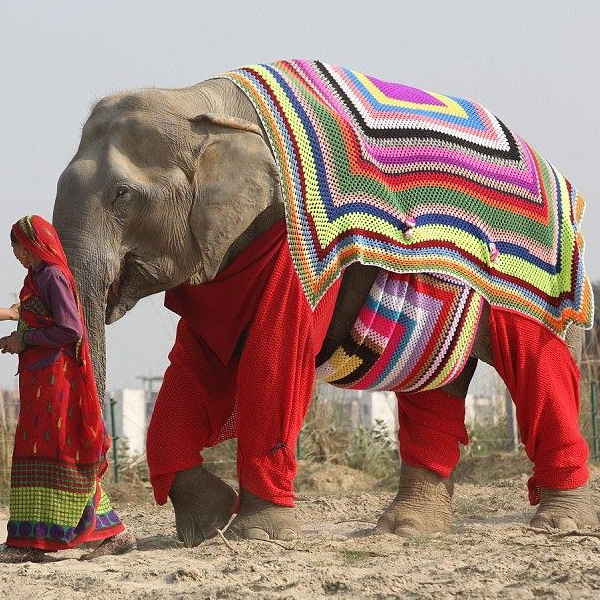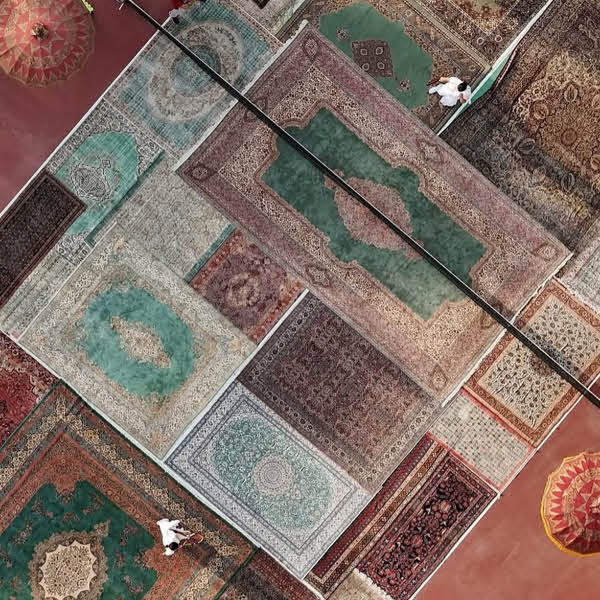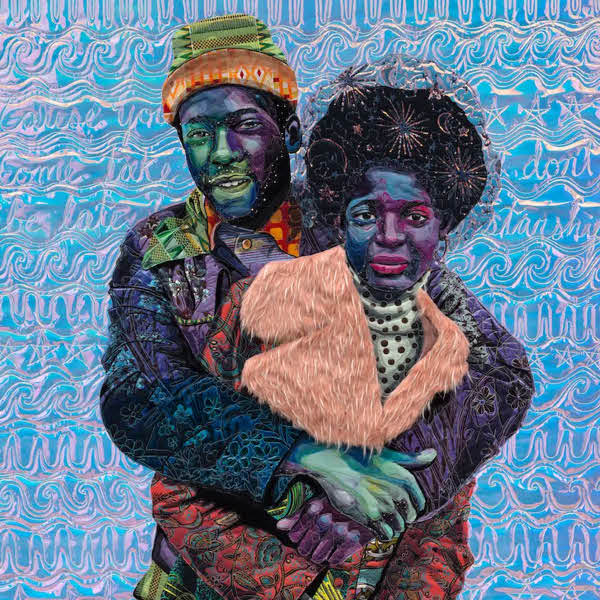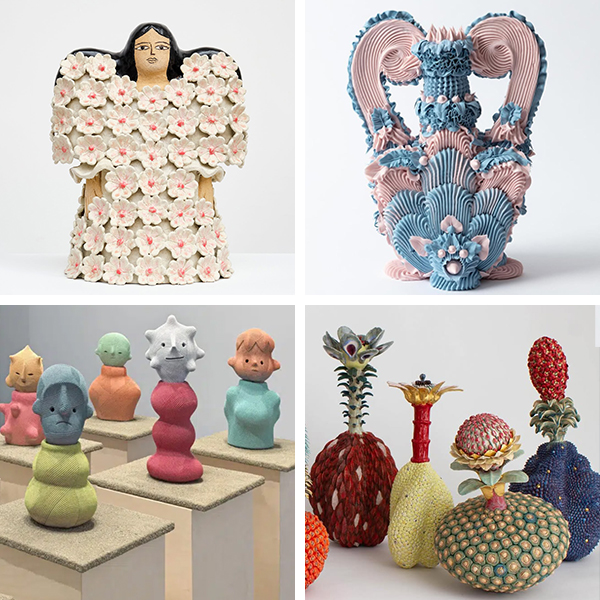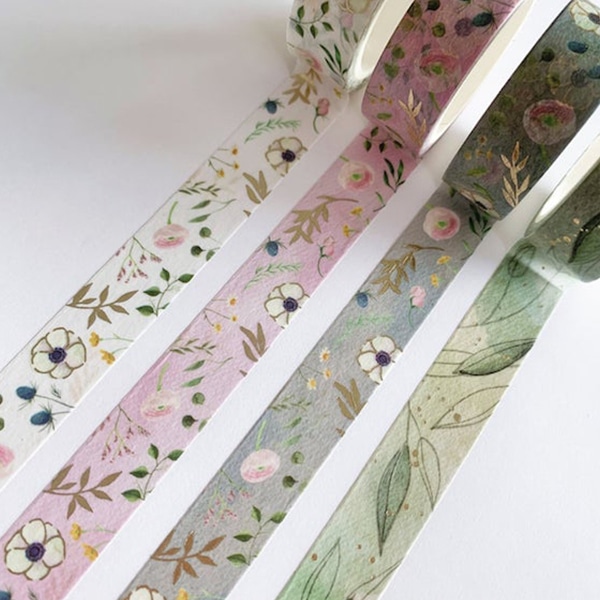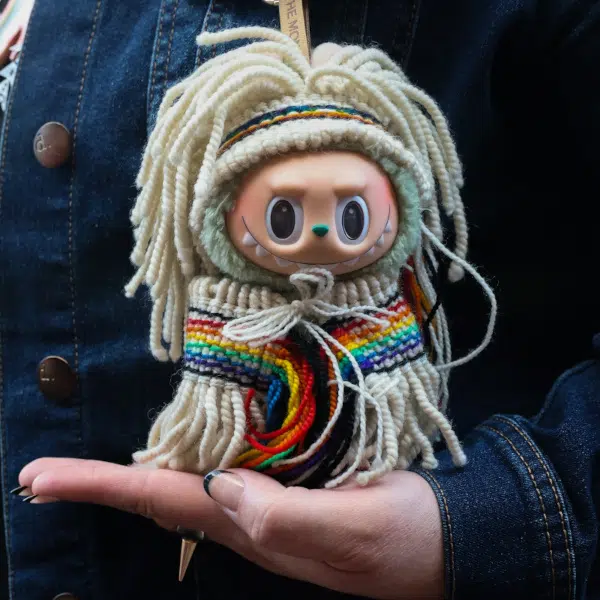
Photo: Stock Photos from Mostovyi Sergii Igorevich/Shutterstock
The start of spring means that Easter is on the horizon, which for many people means one thing—it's time to start decorating eggs. But did you know that in Ukraine, Easter egg decorating is an important art form that dates back centuries? Known as pysanky, these Ukrainian Easter eggs are decorated using the wax-resist (batik) method. Covered in stunning motifs often taken from Slavic folk art, you'll also find these decorated eggs in many parts of Eastern Europe.
Creating these precious eggs takes focus and attention to detail, but the results are stunning works of art traditionally given as gifts to family members and community leaders. In fact, pysanka is so important to the culture that it's thought that it was even produced in prehistoric Ukraine. Archaeologists have found decorated ceramic eggs to back up this theory and, according to folklore, pysanky can help ward off evil from overtaking the world. They were also believed to help ensure the return of spring and bring fertility to livestock and crops; pysanky were placed near cows and horses, in chicken nests, and left under beehives all in an effort to make the season a fruitful one.
Later, this blended with Christian beliefs, though many people still feel that the decorative eggs work to scare off bad spirits from the home.
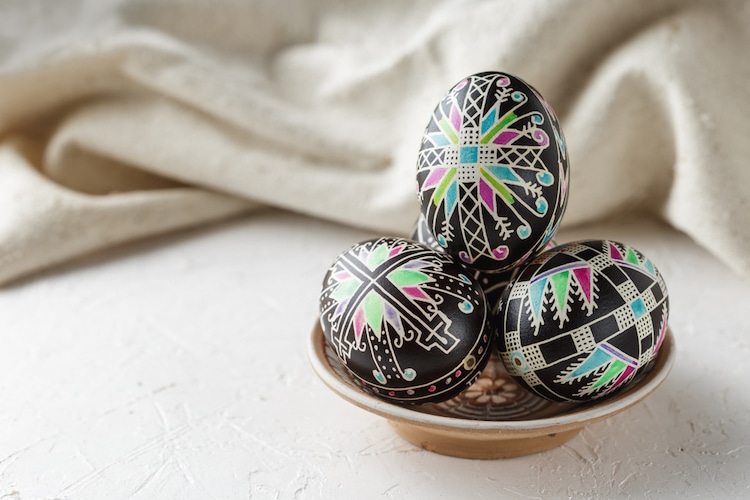
Photo: Stock Photos from Andriana Syvanych/Shutterstock
So how does one create a pysanka? The word itself is taken from the Ukrainian verb “to write,” which gives a hint into how it's done. After designs are drawn in pencil around the raw egg, it's hollowed out by drilling a small hole in the top and bottom and letting its innards seep out. Melted wax is then applied across the lines with a tool called a kistka, and the egg is dipped in the first dye. Just as in batik, the wax helps seal off the lines so that they remain free of the dye. Wax is continually added, and the egg is continuously dipped in different colors to achieve the desired design. Once dry, the beeswax is melted off with a candle, revealing the colorful pattern. Pysanky are then varnished to preserve them before being displayed on special stands.
For many families, creating pysanky is an important cultural ritual that brings them together each Easter. It's the perfect creative project for all ages, so whether you want to pay homage to your Slavic heritage or simply take your Easter eggs to a new level, why not give it a try? Many community organizations also run workshops on how to decorate Ukrainian Easter eggs or you can try an online pysanky class.
Pysanky Supplies
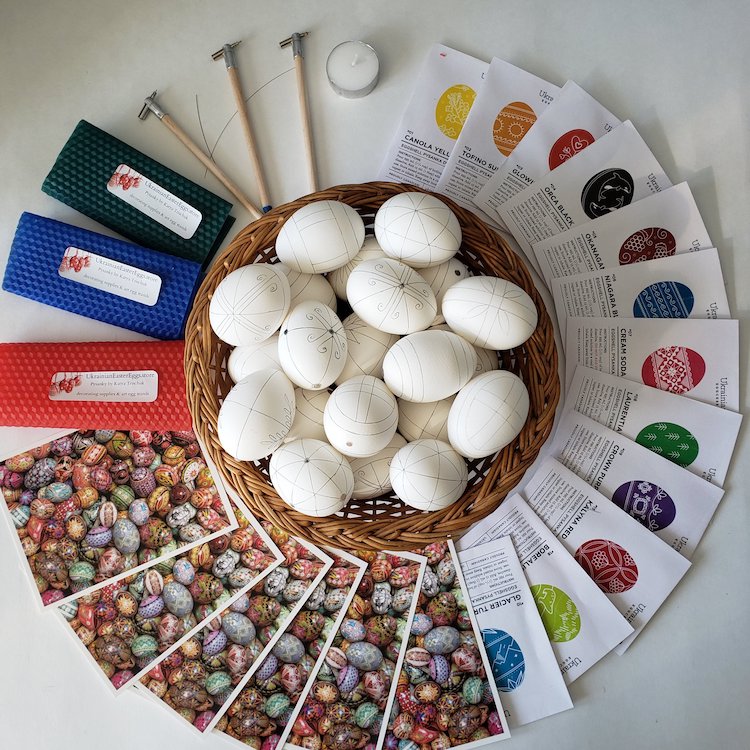
Photo: Ukrainian Easter Eggs
If you want to get started creating your own pysanky, it doesn’t take much to get started. It’s even possible to find a wide range of pysanky kits that provide all the supplies you’ll need. Here are the essential tools you’ll need to start making your own Ukrainian Easter eggs.
Kistka – This special pen has a receptacle for hot wax, allowing you to draw your designs across the egg. Traditionally made from a stick and a piece of brass around a needle, which is heated by a candle flame and then dipped in wax. These days there are electric kistka that will hold more wax. They’re readily available in craft stores or online. But, if you are extra crafty, you can even make your own kistka. Tips of different widths are also available to produce a variety of lines.
Beeswax – You'll fill your kistka with melted beeswax in order to trace over the lines of your pattern prior to dipping the egg in each color of dye. In this way, the color below the wax is preserved, allowing you to create complex, colorful designs. Once the dying process is complete and the egg is dry, simply melt the wax away with the flame of a candle.
Drop Pull Tool – In some Eastern European countries like Poland, Slovenia, Lithuania, and the Czech Republic, pysanky are made using a different stylus. This method, called drop-pull, uses pinheads dipped into hot wax to apply designs to the egg. This tool can be used both for the wax-resist method and to create embossed eggs.
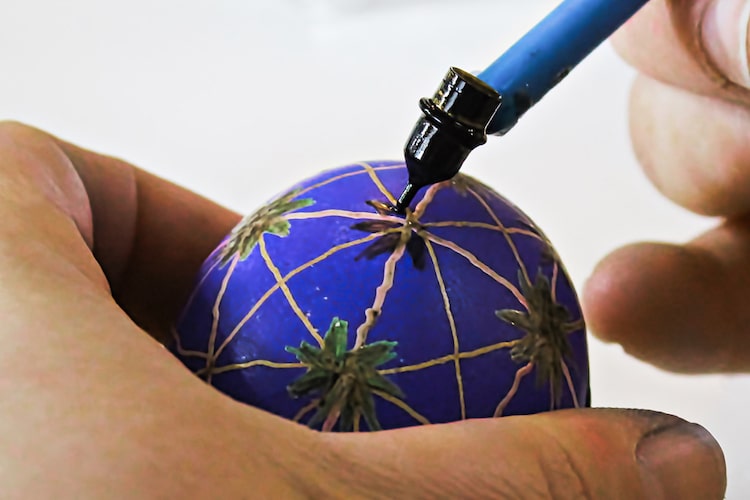
Photo: Stock Photos from Amelia Martin/Shutterstock
Egg Blower – Traditionally, pysanky are created on raw eggs that have had the interior yolk and white drained. To do this, you’ll need to poke a small hole on the ends and blow out the inside.
Pysanky Stand – After all the hard work in creating your decorative egg, you’ll want to show it off. You’ll find stands that you can set your egg in or others that allow you to hang your pysanky if you decide to add a tassel and loop through the hole.
Ukrainian Easter Egg Dyes – Traditionally, pysanky dyes were created from plants and minerals, making it necessary to soak eggs for several hours in order to achieve a strong color. These days, synthetic dye drastically cuts down on time. You'll want to pick up dye specifically made for pysanky rather than traditional Easter egg dye in order to achieve the vivid colors that these eggs are known for.
Pysanky Sleeve – Like the look of these decorated eggs, but aren't sure about going through the whole process? There are now a whole variety of egg sleeves in traditional patterns that will shrink-wrap a design to your egg in seconds. In Ukraine, these sleeves are called Linyvky, which is derived from the Ukrainian word for lazy.
How to Make a Ukrainian Easter Egg

Photo: Stock Photos from Vasyl Rohan/Shutterstock
Though it may seem intimidating at first, making your own Ukrainian Easter egg isn't as difficult as you'd think. Once you've gathered your supplies, pick up a pencil and start sketching out your design. If you are looking for inspiration and aren't sure how to proceed, you may want to purchase Beginner Pysanky: Ukrainian Easter Eggs. This guide includes step-by-step tutorials, as well as plenty of color photos and illustrations to get you started.
Watch this tutorial to see how easy it is to begin making pysanky
Traditional Pysanky Patterns
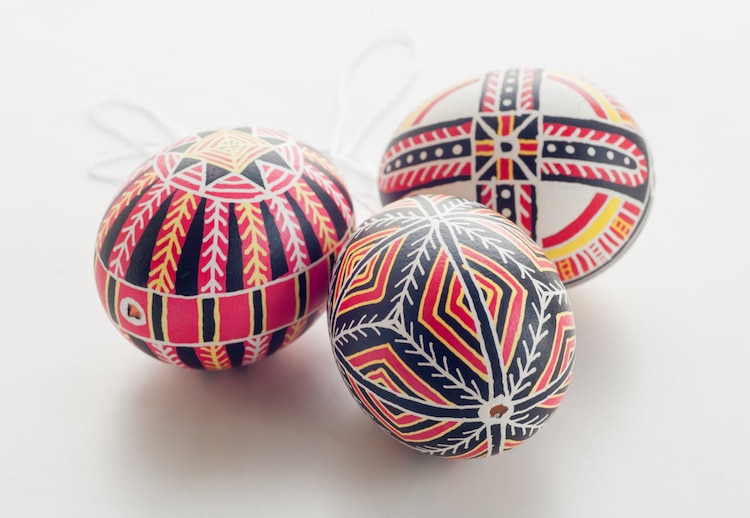
Photo: Stock Photos from Igor Podgorny/Shutterstock
There are many different ornamental patterns and colors that one can find on pysanky. Motifs are often taken from other Slavic folk arts and can be found throughout pottery, embroidery, woodwork, and metalwork. These provide important clues to understanding what ancient pysanky must have been decorated with, as the eggs are too fragile to survive.
Different motifs can play on religious iconography—such as a commonly featured triangle symbolizing the Holy Trinity—or symbolize the changing seasons and societal roles. Different villages may have specialized in particular motifs, but some of the most common imagery includes depictions of the sun, birds, a ladder (to symbolize prayers making their way toward heaven), the tree of life, flowers, and geometric designs.
Color Meanings
The color palette used in pysansky eggs is equally important to the design. While in the past, using two colors was more common, over time, people have tried to incorporate more hues into the design, under the belief that a more colorful egg would mean more good luck.
Some colors and color combinations are more popular than others. Red, for instance, symbolizes love, hopes of marriage, and life-giving blood; white is associated with purity, light, and virginity; yellow is associated with the moon and stars as well as the harvest; and black is regarded as a spiritual color related to the afterlife.
Take a look at some modern pysanky to see how common patterns are being interpreted today.
View this post on Instagram
View this post on Instagram
View this post on Instagram
View this post on Instagram
View this post on Instagram
View this post on Instagram
View this post on Instagram
View this post on Instagram
View this post on Instagram
View this post on Instagram
View this post on Instagram
View this post on Instagram
Frequently Asked Questions
How do you pronounce the word “pysanky”?
The pronunciation has slight variations depending on whether or not it is said by a native English speaker, Ukrainian speaker, or Polish speaker. PronounceWiki has audio recordings of these variations.
How do you make pysanky eggs?
Pysanky eggs, also called Ukrainian Easter eggs, are made by hollowing out eggs and decorating them using the wax-resist method. This entails placing melted wax on the egg with a traditional tool called a kistka in the places where you don't want the colored dye to seep through. Several layers of dipping and wax are used to create popular designs on the eggs.
Where can you buy Ukrainian Easter eggs?
In addition to specialty shops, there are many online retailers that sell both finished Ukrainian Easter eggs as well as supplies to create your own. These include, Ukrainian Gift Shop, Best Pysanky, the Ukrainian Easter Egg Store.
This article has been edited and updated.
Related Articles:
Beautiful Easter Eggs Hand-Painted with Colorful Folk Art Illustrations
Lyrical Illustrations Adorn Ceramic Dishes With Folk Art-Inspired Stories
Beautiful Portraits of Modern Women Giving New Meaning to Traditional Ukrainian Crowns
Vibrant Photos Pay Homage to Slavic Folklore through High-Fashion Portraits











































































